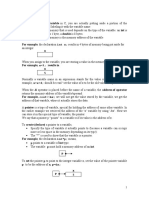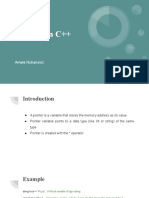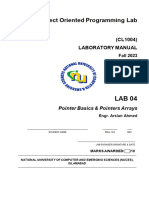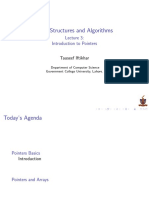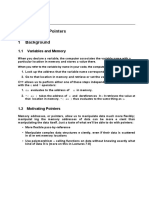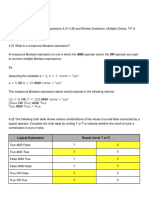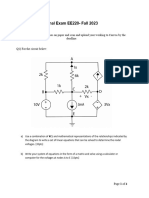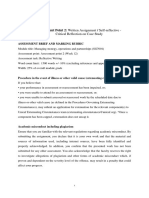0% found this document useful (0 votes)
14 views16 pagesLecture 1 - Intro To Pointers
This document is a lecture on pointers in C++, covering their introduction, usage, and operations. It explains concepts such as pointer variables, address-of and dereferencing operators, pointer arithmetic, and the differences between pointers and references. Additionally, it includes examples, practice problems, and homework assignments related to the topic.
Uploaded by
Muhammad ObaidullahCopyright
© © All Rights Reserved
We take content rights seriously. If you suspect this is your content, claim it here.
Available Formats
Download as PDF, TXT or read online on Scribd
0% found this document useful (0 votes)
14 views16 pagesLecture 1 - Intro To Pointers
This document is a lecture on pointers in C++, covering their introduction, usage, and operations. It explains concepts such as pointer variables, address-of and dereferencing operators, pointer arithmetic, and the differences between pointers and references. Additionally, it includes examples, practice problems, and homework assignments related to the topic.
Uploaded by
Muhammad ObaidullahCopyright
© © All Rights Reserved
We take content rights seriously. If you suspect this is your content, claim it here.
Available Formats
Download as PDF, TXT or read online on Scribd
/ 16


